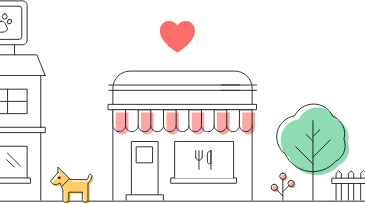This article was updated on June 25, 2020.
What Is New York Doing To Help?
As well as being the state hit hardest by COVID-19, New York has also had budget troubles over recent years which have caused the state to run through its disaster relief funding quite quickly. In light of this, the state government is turning mainly to the help of subsidiaries, partners in the private sector, and the federal government in order to best serve the disaster relief needs of its constituents.
New York Small Business Development Center (SBDC)
The New York SBDC is the main source of support and funding which local businesses should seek out. So far, they have dispersed billions of dollars in funding to help businesses across the state, with a large concentration in New York City.
Unfortunately, a number of large awards have been granted to businesses that don’t quite qualify as “local.” Some of these include Macy’s and Ritz Carlton, both of which are a far cry from your neighborhood mom-and-pop shops. These awards have sparked a huge amount of backlash across the state, as it seems larger corporations are being fed at the expense of true small local businesses.
As a result, state and national legislators have called for funds to be returned so that they may be re-allocated to the local businesses that make up 98% of all businesses in the state. Additionally, negotiations are underway to solicit even more funding from the federal government.
In short, funds are scarce, but should become more available over the coming weeks. The SBDC will continue to offer grants and subsidized loans to local businesses in need, and they strongly recommend that you apply as soon as possible so they may deliver aid when it becomes available.
More information on the exact types of funding and availability can be found here.
What Type Of Programs Are Being Offered By The Federal Government?
As you may know by now, the federal government approved the CARES Act (Coronavirus Aid, Relief, and Economic Securities) in late March, which reserves $350 billion in funding to support local businesses and employees across the U.S. affected by the COVID-19 pandemic.
The funds dried up quickly due to the massive demand. By late-April there was already approval of a secondary relief fund of $484 billion, which directed $310 billion to the Paycheck Protection Program.
These funds are being used to support a number of relief programs, including:
Paycheck Protection Program (PPP)
Designed to provide incentives for businesses to keep their people employed, the PPP is offered as a loan which can be rolled over into a grant by fulfilling the following conditions:
- Retain all employees on the payroll for a period of 8 consecutive weeks
- Use funds for ONLY the following functions:
- Payroll functions
- Rent payments
- Mortgage interest
- Utilities
Thanks to the PPP Flexibility Act of 2020, businesses can also choose to use the loan over a period of up to 24 weeks before the end of the year.
Loans provided under the PPP should not be used to settle outstanding accounts or other liabilities not listed above. To do so would disqualify your business from converting your PPP loan to a grant. However, there are other options available that may help support you in these functions as well.
Emergency Small Business Relief Loan Fund
Renaissance Economic Development Corporation has launched this fund to help local businesses operating in NYC. Qualifying businesses may receive loans up to $50,000 at a low, fixed interest rate with deferments up to 6 months. What’s more, these loans are for businesses with 50 or fewer employees only.
Programs like these can have a real and immediate impact at the neighborhood level, and more keep popping up as the quarantine drags on. Here are details on eligibility requirements and how to apply.
COVID-19 in New York
Establishing and running your own local business is a tall order for budding and seasoned entrepreneurs alike, but especially in the state of New York where tax rates rank among the steepest in the country. The advent of COVID-19, which has rocked the state with a vengeance, has only added to the struggles of smaller enterprises.
In fact, many are at risk of going under without a little help to keep them on their feet.
This unfortunate fact is well-noted by state and national governments, both of which are working around the clock to provide solutions aimed at keeping New York’s local businesses afloat. Here, we’ll discuss some of the relief programs already in existence, and how you can go about taking advantage of them to help your business through these tough times.
How Has COVID-19 Affected New York?
While New York was at first the epicenter of the U.S. coronavirus outbreak, aggressive social distancing guidelines have slowed the spread of the virus throughout the Empire State. Current case numbers can be found through Google’s case tracker.
News has been bleak for local small businesses in New York. It has been estimated that approximately 40 percent of them will never reopen their doors in the post-pandemic era. However, New York has also been a hotspot for innovation, with businesses seeking to adapt to the changing landscape. As the state reopens, businesses can begin to see the light at the end of the tunnel.
Neighborhood-level Resources
As more and more groups rally to keep local businesses alive, it becomes increasingly important to consolidate them where they can be of use to those in need. This call is being answered by some of the entities already mentioned, including the SBDC, which updates news and resources for small local businesses as they become available.
However, government-sponsored entities are not the only source of help in a time like this. The general public and small business owners are increasingly looking to each other to crowdsource ideas and share local information amongst themselves more than ever before. In addition, mutual aid groups have sprung up all over New York City.
Reopening New York’s Businesses
Governor Cuomo has created statewide guidelines for reopening. As New York’s 10 regions meet the state’s health and safety guidelines, they can begin to progress through the phases of reopening. They are as follows:
- Phase One – Construction, manufacturing, and agricultural businesses can reopen. Retail stores can begin curbside pickup services.
- Phase Two – In-person retail, professional services, and real estate services can resume functioning while taking steps to prevent the spread of the virus.
- Phase Three – Restaurants and bars can seat patrons outdoors and at reduced capacity.
- Phase Four – Arts and entertainment venues can reopen, along with schools.
New York City is the last region to enter Phase One (on June 8th) as large parts of upstate New York progressed to Phase Three—in which crowds of up to 25 can gather.
During the summer, all 10 regions are expected to progress to further phases as long as cases continue to decline.
The state provides a reopening lookup tool to guide business owners through their eligibility and all necessary steps. The state provides mandatory guidelines for all businesses, which include:
- Ensuring social distance is maintained between employees and patrons
- Providing free face coverings for employees
- Requiring employees wear masks when physical distance is not possible
- Posting social distancing markers at cash registers and other stations
- Regular cleaning and disinfecting
- Training all employees on new health and safety requirements
- Posting signage throughout the business
- Screening employees for symptoms
There are also additional recommended practices. The state provides industry-specific safety plan templates so that individual businesses can open safely and continue to comply with guidance.
Finally, local counties within New York may have their own rules and regulations regarding reopening. Be sure to check in with your local business association to confirm whether these affect your business.
Nextdoor: For The Community, Of The Community
Nextdoor is the neighborhood hub built specifically to share information pertaining to your specific geographic area on a hyperlocal level. Locals keep each other up-to-date on resources and opportunities available in their neighborhood daily.
The power of a local community coming together especially in times of crisis is immense, and Nextdoor harnesses this power to provide the best source of real-time information to locals and business owners. This resource is predicated on the good will and cooperation of those who use it, and as such can be instrumental in supporting local business as well as those who depend on it.
Sign up for a Business Page on Nextdoor and join in on the local conversation.
--
Additional sources:
SBDC. News and Resources For Small Business Owners. http://www.nysbdc.org/CoronaSBupdates.html
Renaissance Economic Development Corporation. Emergency Small Business Relief Loan Fund. https://renaissance-ny.org/emergency-small-business-relief-loan-fund/
Spectrum News. How Will The City’s Small Businesses Survive Coronavirus Shutdowns.https://www.ny1.com/nyc/all-boroughs/coronavirus/2020/04/09/new-york-city-small-businesses-coronavirus
New York Magazine. Can Groceries Save New York’s Restaurants https://www.grubstreet.com/2020/04/new-york-city-restaurants-embrace-groceries.html
New York Forward. Industries Reopening by Phase. https://forward.ny.gov/industries-reopening-phase
The New Yorker. What Mutual Aid Can Do During a Pandemic. https://www.newyorker.com/magazine/2020/05/18/what-mutual-aid-can-do-during-a-pandemic
Investopedia. Paycheck Protection Program Flexibility Act of 2020. https://www.investopedia.com/paycheck-protection-program-flexibility-act-of-2020-an-overview-484694
If you are a local business, claim your free Business Page to get started on Nextdoor. Resources on how to use Nextdoor to stay connected with your local customers during coronavirus, pertinent news affecting businesses, and more, are available in our Small Business Guide for Coronavirus Relief.





-1%20(1).jpg?width=200&name=iStock-1140598547%20(1)-1%20(1).jpg)
.jpg?width=200&name=NextdoorOakland-134-min%20(1).jpg)
.jpg?width=200&name=iStock-1160229044-min%20(1).jpg)
